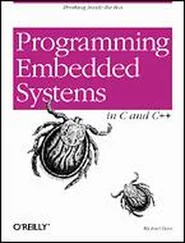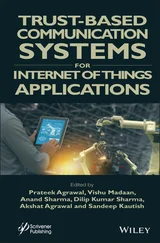1 Cover
2 Title Page Mobile Communications Systems Development A Practical Introduction to System Understanding, Implementation, and Deployment Rajib Taid
3 Copyright Page
4 About the Author
5 Preface
6 Acknowledgments
7 List of Abbreviations
8 1 Introduction
9 Part I: Network Architectures, Standardization, Protocols, and Functions 2 Network Architectures, Standardizations ProcessIntroduction 2.1 Network Elements and Basic Networks Architectures 2.2 Mobile Communication Network Domains 2.3 Mobile Communications Systems Evolutions 2.4 Mobile Communications Network System Engineering 2.5 Standardizations of Mobile Communications Networks 2.6 3GPP Releases and Its Features Chapter Summary 3 Protocols, Interfaces, and ArchitecturesIntroduction 3.1 Protocol Interface and Its Stack 3.2 Classifications of Protocol Layers 3.3 Grouping of UMTS, LTE, and 5G Air Interface Protocol Layers 3.4 Initialization of a Logical Interface 3.5 Protocol Layer Termination 3.6 Protocol Sublayers 3.7 Protocol Conversion 3.8 Working Model of a 3GPP Protocol Layer: Services and Functions 3.9 General Protocol Model Between RAN and CN (UMTS, LTE, 5G) 3.10 Multiple Transport Networks, Protocols, and Physical Layer Interfaces 3.11 How to Identify and Understand Protocol Architectures 3.12 Protocol Layer Procedures over CN Interfaces Chapter Summary 4 Encoding and Decoding of MessagesIntroduction 4.1 Description and Encoding/Decoding of Air Interface Messages 4.2 Encoding/Decoding of Signaling Messages: RAN and CN Chapter Summary 5 Network ElementsIntroduction 5.1 Network Elements and Their Identities 5.2 Permanent Identities 5.3 Temporary Identities Assigned by CN 5.4 Temporary Identities Assigned by RAN: RNTI 5.5 Usages of Network Identities 5.6 Native and Mapped Network Identities 5.7 LTE UE Application Protocol Identity Chapter Summary 6 Interworking and Interoperations of Mobile Communications NetworksIntroduction 6.1 Requirements and Types of Interworking 6.2 Interworking Through Enhanced Network Elements 6.3 Interworking Through Legacy Network Elements 6.4 Interworking Between LTE/EPS and 5G Systems 6.5 Interoperations of Networks: LTE/EPS Roaming 6.6 UE Mode of Operation 6.7 Function of E‐UTRAN in a VoLTE Call Chapter Summary 7 Load Balancing and Network SharingIntroduction 7.1 Core Network Elements Load Balancing 7.2 Network Sharing Chapter Summary 8 Packets Encapsulations and Their RoutingIntroduction 8.1 User Data Packets Encapsulations 8.2 IP Packet Routing in Mobile Communications Networks 8.3 IP Header Compression and Decompression Chapter Summary 9 Security Features in Mobile Communications NetworksIntroduction 9.1 A Brief on the Security Architecture: Features and Mechanisms 9.2 Security Features and Its Mechanisms 9.3 GSM Security Procedures 9.4 UMTS, LTE, and 5G: AS and NAS Layer Security Procedures 9.5 Security Contexts 9.6 Security Interworking Chapter Summary
10 Part II: Operations and Maintenances 10 Alarms and Faults ManagementsIntroduction 10.1 Network Elements Alarm and Its Classifications 10.2 Sources of Abnormal Events and Alarms 10.3 Identifying Sources of Alarms from 3GPP TSs 10.4 Design and Implementation of an Alarm Management System 10.5 Alarm Due to Protocol Error 10.6 Alarm Due to Abnormal Conditions 10.7 How to Troubleshoot Protocol Error Using the Alarm Data Chapter Summary 11 Performance Measurements and Optimizations of Mobile Communications NetworksIntroduction 11.1 Counters for Performance Measurements and Optimizations 11.2 Performance and Optimizations Management System 11.3 Key Performance Indicator (KPI) Chapter Summary 12 Troubleshooting of Mobile Communications Networks IssuesIntroduction 12.1 Air Interface‐Related Issues 12.2 Debugging Issues with IP‐Based Logical Interface 12.3 Conformance Testing Issues 12.4 Interoperability Testing (IOT) Issues 12.5 Interworking Issues 12.6 Importance of Log/Traces and Its Collections 12.7 Steps for Troubleshooting Chapter Summary
11 Part III: Mobile Communications Systems Development 13 Core Software Development FundamentalsIntroduction 13.1 A Brief on Software Development Fundamentals 13.2 Hardware Platforms: Embedded System, Linux Versus PC 13.3 Selecting Software Platforms and Features 13.4 Software Simulators for a Mobile Communications Network 13.5 Software Root Causes and Their Debugging 13.6 Static Code Analysis of Software 13.7 Software Architecture and Software Organization 13.8 System and Software Requirements Analysis 13.9 Software Quality: Reliability, Scalability, and Availability Chapter Summary 14 Protocols, Protocol Stack Developments, and TestingIntroduction 14.1 Components of a 3GPP Protocol TS 14.2 3GPP Protocol Layer Structured Procedure Description 14.3 Protocol Layer Communications 14.4 Air Interface Message Format: Signaling Layer 3 14.5 Air Interface Message Format: Layer 2 14.6 RAN – CN Signaling Messages 14.7 Modes of Operation of a Protocol Layer 14.8 Example of a Protocol Primitive and PDU Definition 14.9 Example of a Protocol Layer Frame Header Definition 14.10 Examples of System Parameters 14.11 Examples of Protocol Information Elements and Its Identifier 14.12 3GPP Release Specific Changes Implementation 14.13 Examples of Protocol Messages Types 14.14 Protocol Layer Timer Handling 14.15 Protocol Layer Development Using State Machine 14.16 Protocol Layer Development Using Message Passing 14.17 Protocol Layer Data and its Types 14.18 Protocol Layer Control and Configuration 14.19 Protocol Context Information 14.20 Protocol Layer Message Padding 14.21 Device Driver Development 14.22 Guidelines for Protocol Stack/Layer Development 14.23 Software Profiling, Tools and Performance Improvement 14.24 Protocol Stack Testing and Validation Chapter Summary 15 Deriving Requirements Specifications from a TSIntroduction 15.1 3GPP Protocol Layer Procedures 15.2 3GPP System Feature Development Requirements 15.3 Example Feature: Radio Access Network Sharing 15.4 Example: Interworking/Interoperations 15.5 3GPP System Feature and High‐Level Design Chapter Summary
12 Part IV: 5G System and Network 16 5G NetworkIntroduction 16.1 5G System (5GS) Use Cases 16.2 Support of Legacy Services by 5G System 16.3 5G System Network Architecture 16.4 5G System NG–RAN/gNB Logical Architecture 16.5 5GC System Architecture Elements 16.6 5G System Deployment Solutions 16.7 5G System and LTE/EPS Interworking 16.8 5G System Native and Mapped Network Identities 16.9 5G System Network Slicing 16.10 Management and Orchestration (MANO) of 5G Network 16.11 5G System Security Chapter Summary 17 Introduction to GSM, UMTS, and LTE Systems Air InterfaceIntroduction 17.1 Air Interfaces Protocol Architectures 17.2 Protocol Sublayers 17.3 Control Plane and User Plane Protocols 17.4 Protocols Domains Classifications 17.5 Access Stratum and Non‐access Stratum 17.6 Message Formats 17.7 Security Over the Air Interface 17.8 Piggybacking for Reduction of Signaling Overhead 18 5G NR Air InterfaceIntroduction 18.1 NR Control Plane Protocol Layers 18.2 Session Management (5G SM) Layer 18.3 Quality of Service (5G QoS) 18.4 Mobility Management (5G MM) Layer 18.5 RRC Layer Chapter Summary 19 5G NR Air InterfaceIntroduction 19.1 NR User Plane Protocol Layers 19.2 SDAP Layer 19.3 PDCP Layer 19.4 RLC Layer 19.5 MAC Layer 19.6 Physical Layer Chapter Summary 20 5G Core Network ArchitectureIntroduction 20.1 Control Plane and User Plane Separation – CUPS 20.2 Service‐Based Architecture (SBA) 20.3 Network Function Virtualization (NFV) Chapter Summary 21 5G SystemIntroduction 21.1 Design of 5GC Service Interface and Its Operations 21.2 Design of 5GC NF Service Interface Using UML and C++ Class Diagram 21.3 Usages of C++ Standard Template Library (STL) 21.4 Software Architecture for 5G System 21.5 Data Types Used in 5GC SBI Communications Chapter Summary 22 3GPP Release 16 and BeyondIntroduction 22.1 5GS Enhancements as Part of Release 16 22.2 5GS New Features as Part of Release 16 22.3 3GPP Release 17 Chapter Summary
Читать дальше












